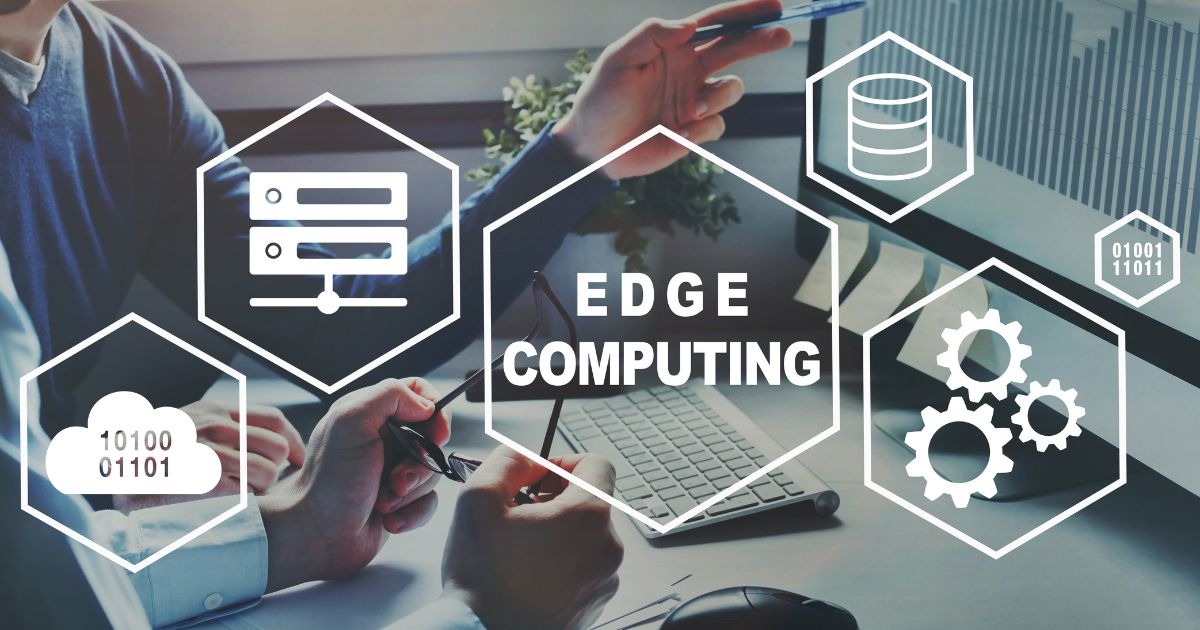
If you’re like most people, you probably think of the internet as something that’s “out there” – in the cloud, as it were.
But the reality is that the internet is a physical infrastructure made up of millions of miles of cables and wires, thousands of data centers, and millions of devices. And at the heart of this infrastructure is something called the “edge.”
The edge is the point at which data enters the internet infrastructure – typically at the edge of a network or a device. And it’s becoming increasingly important as more and more devices and sensors are connected to the internet.
Why? Because the edge is where data is generated. It’s also where data is processed and where decisions are made.
As the internet of things (IoT) and artificial intelligence (AI) become more prevalent, the edge will only become more important.
So what do you need to know about edge computing? Here’s a comprehensive guide.
What is Edge Computing?
Edge computing is a distributed computing model that brings computing and data storage closer to the data source.
It involves moving computing and data storage away from centralized data centers and into devices and other distributed locations.
The goal of edge computing is to reduce latency, conserve bandwidth, and improve security and privacy.
4 Benefits of Edge Computing
There are several benefits of edge computing, including:
1. Lower Latency
One of the main benefits of edge computing is that it can help to reduce latency. By processing data closer to the source, edge computing can help to reduce the time it takes for data to be transmitted to a central location. This can be especially beneficial for applications that require real-time data, such as augmented reality or video streaming.
2. Reduced Costs
Another benefit of edge computing is that it can help to reduce costs. By processing data at the edge of the network, organizations can save on bandwidth and other resources that would be required to transmit data to a central location.
3. Increased Security
Edge computing can also help to increase security. By processing data locally, organizations can keep sensitive data within their own network and out of the hands of third-party providers. Additionally, edge computing can help to reduce the risk of data breaches, as data is less likely to be intercepted while in transit.
4. Improved Privacy
Edge computing can also help to improve privacy. By keeping data within the organization’s network, individuals can be sure that their data is not being shared with third-party providers. Additionally, edge computing can help ensure that data is not collected or stored without the individual’s consent.
What is Edge Computing Used For?
Edge computing is used for a variety of purposes, including:
1. IoT
IoT devices generate a large amount of data, which can be processed at the edge to improve performance and save on bandwidth. Additionally, edge computing can help to ensure that data is processed quickly, as data does not need to be transmitted to a central location.
2. Autonomous vehicles
Autonomous vehicles generate a large amount of data that needs to be processed quickly. Edge computing can help to ensure that data is processed quickly and accurately, as data does not need to be transmitted to a central location.
3. Augmented reality
Augmented reality applications require real-time data processing. Edge computing can help to ensure that data is processed quickly and accurately, as data does not need to be transmitted to a central location.
4. Virtual reality
Virtual reality applications require real-time data processing. Edge computing can help to ensure that data is processed quickly and accurately, as data does not need to be transmitted to a central location.
Conclusion
Edge computing is a type of computing that brings data storage and processing closer to the devices that are using that data. This can be done by either putting data processing and storage capabilities directly on devices or by putting those capabilities in data centers that are closer to the devices. Edge computing can help improve performance and reduce latency, as well as save on bandwidth and energy costs.
With the main focus on custom-software development, Informatics also specializes in infrastructure solutions and services through years of experience and knowledge in the industry. We gained a prominent position in the global IT sector, providing some of the most cutting-edge software and Infrastructure solutions with a local and international client list. Get in touch with us! Let us know how we can help.
Written by Hiran Wickramasinghe
